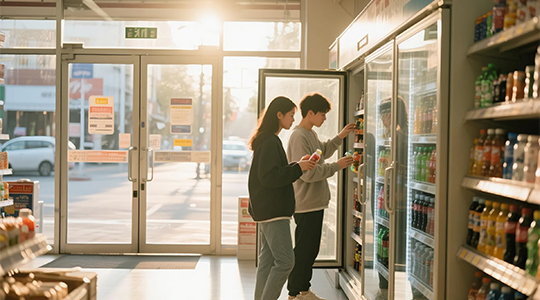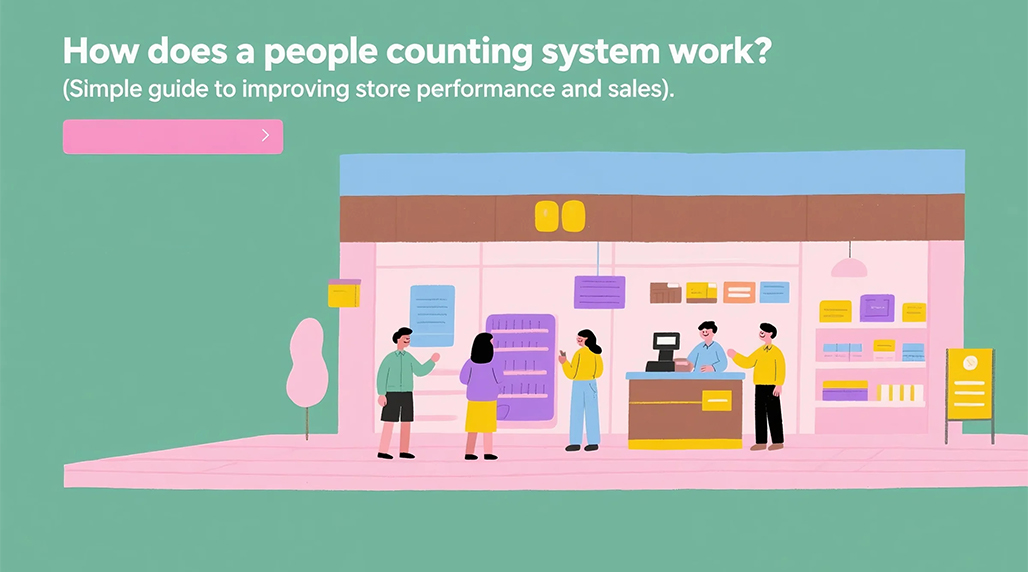Okay, so I wanted to figure out how to get more folks buying stuff in my store. Seemed like knowing how many people actually walked in might be a good start, right? Sales were okay, but I had this feeling we could do better, just didn’t know where to tweak things.
Getting Started: The Why and How
First thing, I just thought, well, how many people even come through that door each day? Each hour? We were kind of guessing. Sometimes it felt super busy, other times dead, but guessing isn’t great for business. I needed real numbers.
I briefly thought about having staff click one of those little manual counters. Honestly? Seemed like a pain. They’ve got better things to do, like helping customers, and it’s easy to forget or get distracted. So, I started looking into tech stuff. Nothing too fancy, mind you. Just something simple that could count heads.
Picking the Gear
Spent some time poking around online, reading about different systems. Some sounded really complicated, needing servers and tech wizards. Nope, not for me. I needed something pretty much plug-and-play. Found these little camera-like sensors you mount overhead, near the entrance. They seemed straightforward enough. Claimed they just count people crossing a line, basically. Ordered a basic kit, figured I’d give it a shot.
Setting It Up: A Bit of DIY
When the kit arrived, it was time to get hands-on. Honestly, involved a bit more ladder time than I expected. Had to find a good spot right above the main entrance, clear view down, but not too obvious. Ran a wire – thankfully just one power cable and one network cable for the main unit that collected the data from the sensors. It wasn’t rocket science, but took an afternoon of fiddling to get the angles right and the wires tucked away neatly enough.
Then came connecting it. Plugged it into our store’s router. Had to install some basic software on my back-office computer that came with the kit. Took a bit of clicking around in the settings to make sure it was actually seeing the entrance area correctly and not counting, I don’t know, a big coat someone was wearing twice.
Watching the Numbers Roll In
And then… it started working! Suddenly, I had this dashboard thing showing me numbers. How many people came in each hour. It was pretty cool just watching it for the first few days. You start seeing patterns almost immediately.
- Definitely saw the lunch rush was real.
- Weekends, especially Saturdays, were way busier than weekdays, no surprise there.
- But interestingly, late Tuesday afternoons were dead. Like, really dead.

Making Sense of It All
Okay, so I had traffic numbers. Now what? The real work started here. I pulled up our sales data for the same periods. Laid the traffic numbers right next to the sales numbers hour by hour, day by day.
This was the eye-opener. Sometimes, a really busy hour in terms of traffic didn’t actually mean massive sales. And sometimes, quieter periods had surprisingly good sales per person. That got me thinking about conversion rates – what percentage of people walking in were actually buying something?
Trying Things Out (The Fun Part!)
This data gave me stuff to act on. It wasn’t guesswork anymore.
Staffing: We realised we were often understaffed during that Saturday peak and probably overstaffed on quiet Tuesday afternoons. So, we adjusted the schedule. Put more hands on deck when the counter showed the most feet were coming through the door.
Layout: We noticed lots of people seemed to walk in, loop around the front display, and walk out. Maybe the layout wasn’t pulling them deeper into the store? We experimented. Moved a popular product category further back. Changed the front display completely. Watched the counter and the sales to see if it made a difference.
Promotions: Remember those dead Tuesday afternoons? We tried running a small, specific promotion only during those hours. The counter helped us see if it actually drew more people in specifically during that time slot, not just shifting existing shoppers.

So, Did it Work?
Yeah, it actually did. It wasn’t instant magic, took time and trying different things. But slowly, we saw improvements.
Our conversion rate started creeping up. We were turning more browsers into buyers because we could staff better and maybe arrange the store more effectively. Sales did improve, not dramatically overnight, but steadily. It also helped manage staff costs better by aligning schedules with actual customer traffic.
It wasn’t super technical or expensive, the system I chose. Mostly just took the time to install it, look at the numbers regularly, and actually do something based on what the numbers were telling me. Definitely worth the effort of climbing that ladder.
